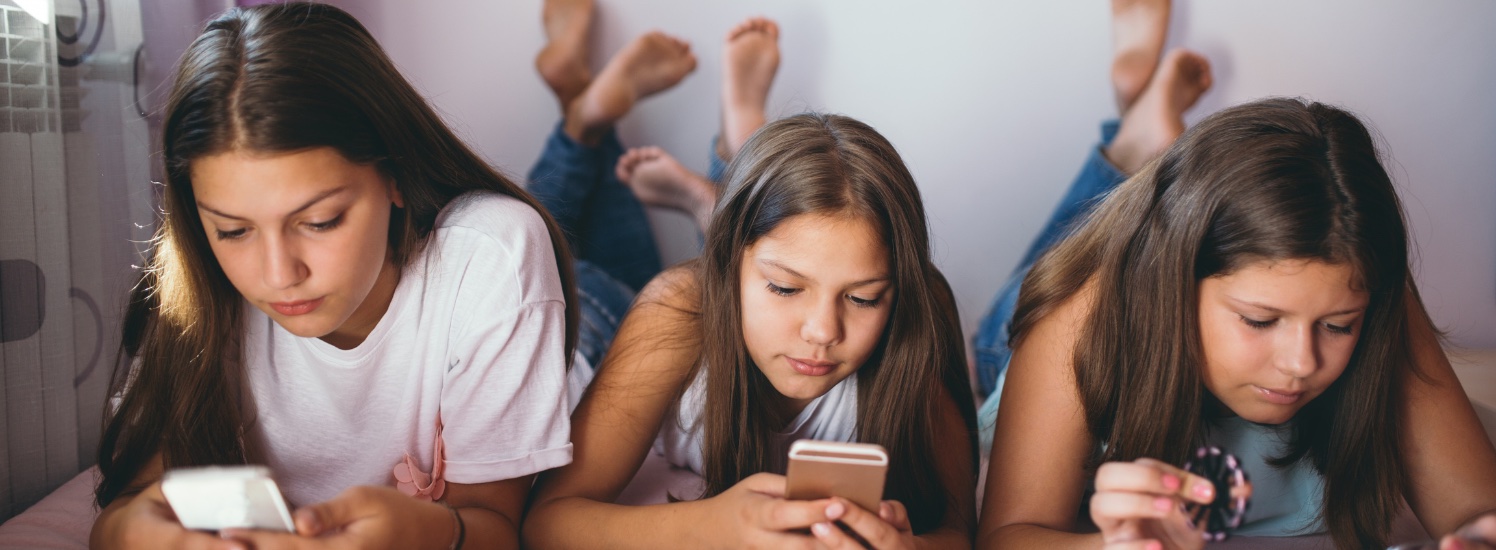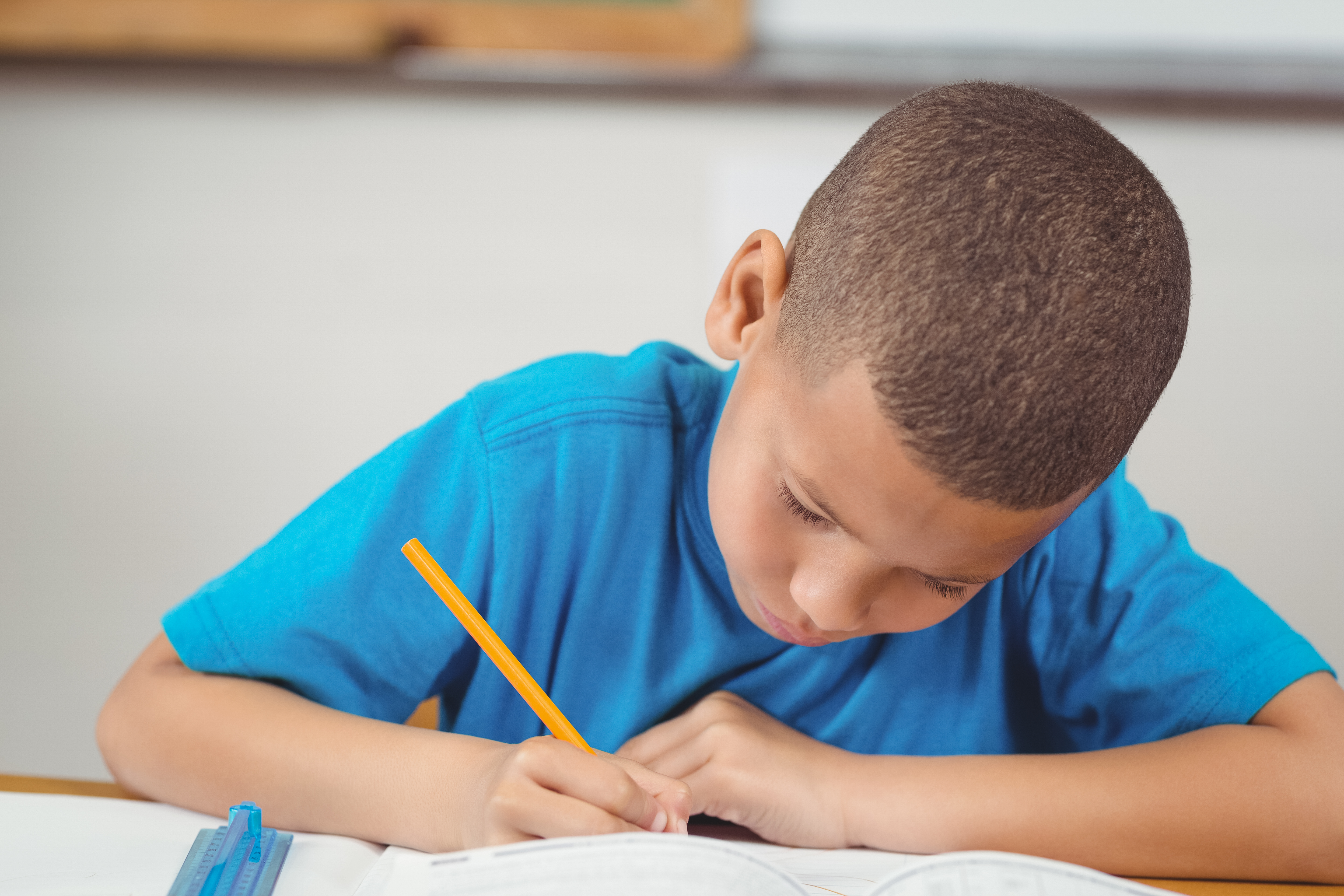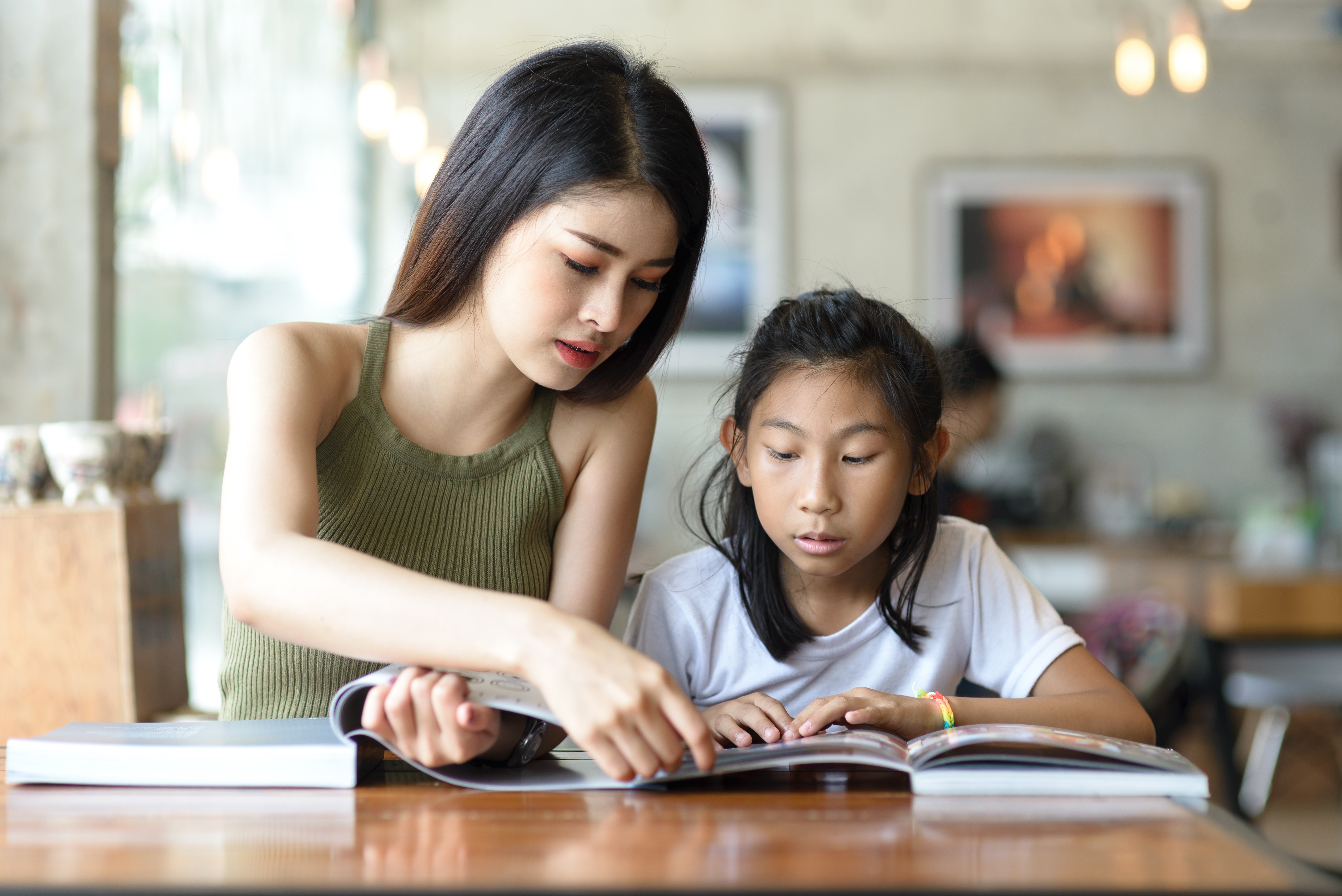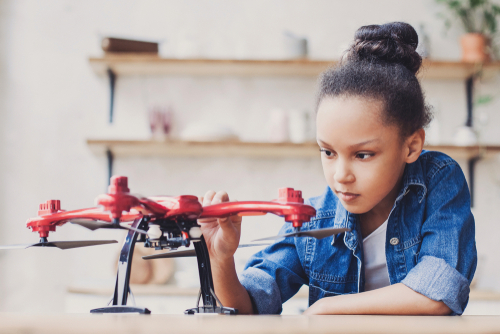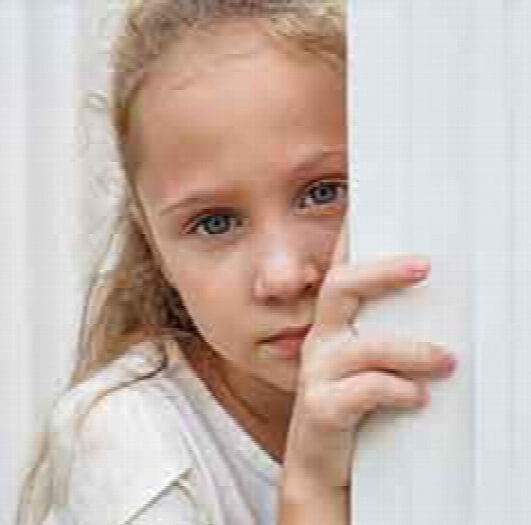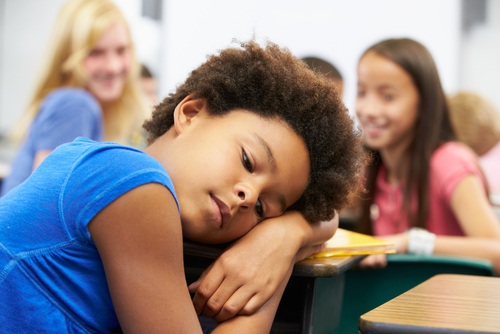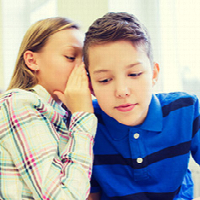Germ-free cyber hugs to you from Ohio! No matter where we live, we’re all most likely still scrambling to adjust to the new normal during this unprecedented health crisis. In my case, since I’m used to babysitting my three and five-year-old grandsons several days a week, our “shelter-in-place” mandate has me in major grandma withdrawal - it’s way too quiet over here!
But if you’re like my daughter, you may find yourself in the opposite situation: being suddenly bombarded by your kiddos 24/7 wondering: how can I possibly engage, amuse, and educate my children until schools (and all the other kid places) open once again? And if you have an ALPS child (i.e. a child with a mix of attention, language processing and/or sensorimotor challenges – see “ALPs Children: A Steep Climb!” on this website) you may feel particularly overwhelmed. Where to start?
Of course, many schools and preschools continue to offer activities online. But did you know your child’s own environment is often the best place to learn? And in my experience, all children, but especially ALPS children – learn best when they’re with those they love, in the place they call home, engaged in real-time experiences that are creative, fun, and hands-on. In other words, where they are right now, with you!
So let’s make lemonade from this unwanted Covid19 lemon. To help inspire your own imagination and creativity, here are ten sample games from my ALPS Archives, collected over a span of forty years with my students, clients, and my own ALPS children and grandchildren. Research indicates the most effective educational programs integrate movement, music, lots of heart-to-heart conversation, reading, hands-on experiences, and sensory fun. Each of the following games integrates several of these areas at once so they’re perfect for all children, but especially children who need a little extra nudge in attention, language, and sensorimotor development.
“When students perceive their learning environment as positive, endorphins are produced that …give students a feeling of euphoria.” - Sousa (2006)*
Who couldn’t use a little natural dose of euphoria in these challenging times (including the parents!) To put it simply: You can’t lose when you make learning fun. So, in this positive frame of mind – enjoy!
Game: Calling All Categories:
Grab a laundry basket and set it in the hall. Tell your child: “Let’s go on a hunt for an animal.” When you find a stuffed or plastic animal, place it in the basket. Then say: “I’ll bet we can find more.” Put each animal you find in the basket. Then do the same with another basket and another category (suggestions: vehicles, clothing, play food, colors, etc). When both baskets are filled, surprise your child by dumping them out and mixing them up. Say: “Oh, no, they’re all mixed up! Which go in the vehicle basket? Which go in the animal basket?” While playing, name each item and talk about it, compare and contrast it with others, then name the category to which it belongs. See if you can think of more categories, and continue the game as long as your child likes.
Game: We are the World
This idea came from the creative mind of my five-year-old grandson. Find different color blankets or bedspreads or tablecloths (maybe not Great Grandma’s special embroidered one…). Decide where you want your “world” to exist (e.g a mountain on the stairs, a cave under the kitchen table, an ocean in the hall, etc.) A blue or green blanket can be the ocean, a tan or beige blanket, the desert; a brown or dark green one a rainforest or jungle, a white sheet for the arctic, etc. Then find things around the house that fit in those areas of the world (e.g. bathtub fish for the ocean, stuffed wolf for the forest, a toy penguin for the arctic, etc.) Let your imaginations go wild! Then, travel all over your “world” – by airplane, boat, or hot air balloon! Help your child read books or research online in each type of terrain. Write down new vocabulary words and concepts and talk about them frequently. If possible, buy or borrow a copy of Julian Lennon’s book Heal the Earth. It’s a fabulous introduction for young children to learn the importance of caring for our planet and all its inhabitants.
Game: Frog to Prince(ss)
This game can be a great adjunct to learning sight words or using flashcards. Write a big letter to fill each of three 8x11 pieces of green construction paper you’ve cut out to resemble a lily pad (e.g. hat, cap, Tim, etc.). Place each letter on a carpet or floor and use masking tape to keep it from slipping. Tell your child s/he has been turned into a frog by a purple monster. But by figuring out the secret “code word” s/he will be turned back into a prince(ss). The trick is s/he must hop sideways from letter to letter (i.e. left to right). Help your child say each sound as s/he hops, e.g. B…A…G. What’s the secret code word? Help the child sound out the word if needed. Then say/read the secret code word out loud. Poof! Your child turns back into a prince(ss). If you can, find a play “crown” or give him/her a “gold coin” (i.e. shiny penny), and have the child return to his/her “kingdom”, sitting on his/her “throne”. Uh oh. Here comes the purple monster again! Continue with other words as long as your child enjoys playing. You can shorten the words to 2 sounds or up to 5 or 6 sound words depending on your child’s level.
Game: Six Feet Funky Dance
Most young children have little understanding of the new phrase “social distancing”. Health experts recommend at least a six-foot distance from people when we’re out. Of course, it generally doesn’t apply at home, but the concept/phrase “six feet” may come in handy later. If you have hula hoops, rope, or string, fashion a circle for each child and yourself. Place each circle about six feet apart. Or, just make an X with masking tape for each dancer to stand on. Depending on your child’s age/comprehension level, you may want to explain why you’re dancing six feet apart (e.g. “There’s a yucky germ going around and the doctors tell us we need to stay six feet away from other people if we’re out”). If your child has questions, now is a good time for an age-appropriate discussion. Or, if you feel your child isn’t ready, just name this the “Six Feet Funky Dance”. If you have 2 yardsticks in the house, you can actually show your child; two yardsticks equal six feet (or use a ruler or measuring tape.) Choose dance music you all know and love (my five and three-year-old grandsons are currently obsessed with “China Grove” by the Doobie Brothers – and the “Circle of Life” (quite a contrast!)Tell your child(ren) the rules are: stay in your circle (or on your “X”) - six feet away from each other. Then start the music and dance your heart out!If your song has lyrics, go over them after you’re done dancing and talk about what they mean. Grown-ups – join in! Forget the Fitbits for now.
Game: Abstract Art with Playdoh
Tell your child you’re going to make beautiful art with Playdoh. Set 6-8 different colors of Playdoh in front of each “artist” (including you). Now – have a great time squeezing, mixing, kneading, squishing any and all color combinations. Show your child how mixing yellow and red makes orange, blue and red makes purple, blue and yellow make green, etc. But give them free rein to make whatever they like. When your child is satisfied with the mix of colors, help him/her flatten the creation with your palm like a pancake. Does it have a name? Do you see a picture in it, or is it an abstract design? Discuss. If you can, take a picture, print it out and if desired, frame your masterpiece! Or, just print out and tape your pictures to an “art” wall. (My grandson’s art gallery doubles as his bedroom).
Game: Emoji Zoo
Say to your child: “Did you know there is a tiny zoo in my phone? Let’s see how many we can find. What should we look for first? An elephant? A camel?” Let your child choose. If s/he’s having trouble thinking of one, you can give her/him choices. Then say, e.g. “OK, a bird. What’s the first sound? Say the sound, and see if your child can tap the letter on the keyboard. When the word is finished, see if the picture pops up! If not, say “Oh, well. Let’s try another.” When I did this activity with my five-year-old grandson, we found about fifteen animals – he squealed with delight each time an emoji popped up. When an animal appears, discuss it for a minute or so; e.g. “Where do we usually see a giraffe? Do you think his neck is short or long? What do giraffes eat? Would you like a giraffe as a pet?” Text your animal emoji zoo to Grandma (or Dad, or Aunt Louisa…) with a short note (e.g. Dear Grandma, Here’s my zoo! I like the monkey best! Love, Camden) If your child isn’t yet reading or beginning to pair sounds with letters, just help him/her think of at least ten animals and talk about the animals as they pop up.
Game: Yoda’s Yoga
Get out those yoga pads (or beach towels) for each participant. Google “Yoga for Preschoolers” (Amazon.com or just type in the phrase). We use the “Ready to Read” book entitled: My First Yoga Class. It’s the perfect introductory book on yoga for little ones. Enjoy the “animal” doing the poses together. Then, sit, practice a little belly breathing. Tell your child you are “The Why Wizard” and you can answer any “why” question they have. Encourage them to think of “why” questions. You may need to start the conversation rolling, e.g. Why is the sky blue? Why do people sleep? Why do we have a moon? Why do we need friends? Just let this conversation go where it will. You might have to consult Wizard Google to look up questions even you don’t know (e.g. Do elephants eat bugs?) You never know what these inquiring little minds come up with! Remember: the best learning occurs when you show interest in your child’s questions and thoughtfully respond to each, sharing in the excitement when you find the answers.
Game: Music Moves and Moods
If at all possible, download “100 Favorite Nursery Rhyme Songs” from Baby Genius. This will comprise your entire library of songs and fingerplays for your child’s entire preschool life! If you can’t get ahold of it, just google “Nursery Rhymes”, “Fingerplays” or “Preschool Songs” and use those. Play them whenever you can; several a day. We played them at lunch and snack times, then at “wake up time” after naps. Choose a song with gestures like “Itsy Bitsy Spider” and really ham it up. Soon, your child will have picked favorites and will be singing, giggling, and gesturing along with you. In addition to singing/gesturing, you can talk about the lyrics and the topic of the song. For instance, you can talk about spiders – what they look like, how many legs they have, what a “spout” is, why the rain would “wash the spider out”. You can also talk about which words rhyme, e.g. spout/out. For nap/rest time, I have found “Lullaby Renditions of Beatles Songs” the most amazing resource to play softly as your child settles down. Also: “Baby Sleep Aid: Classic Lullabies, Soft Nature Sounds and White Noise” is another helpful music and sound album to try. Then, go lie down! You deserve a nap, too.
Game: Outside at Last!
The sky’s the limit – literally! Although some outdoor fun spots will be off-limits for now, the outdoors is still the ultimate classroom for learning so many things and for honing so many skills. Encourage your child to just sit for a few minutes and listen to the sounds all around. A plane? Train? Siren? The wind? Birds? Lawn Mowers? Dogs barking? See if your child can point to the location of the sounds. Have a little conversation about the objects/creatures making the sounds. Then, take a hike! Hunt for numbers, shapes, colors (We found a gnome village in a neighbor’s garden!). If you can, sneak out of the house ahead of time and take pics of “landmarks” (a special tree, a stop sign, a fence). When you find it, compare the pic to the actual item (“Yea!! We found it! It’s a match!”) Have a little bag handy for “treasures” you find along the way, appropriate for placing in the bag and taking home. Leaves, acorns, sticks, seeds, stones, wildflowers, pinecones – make sure the items are safe and supervise carefully. At home, tape the “treasures” to paper for a nature collage and research your finds – what is it? Where did it come from? Play “balance beam” on the sidewalk curbs. Hop over the cracks. Pick an out-of-the-way bush and give your child age-appropriate scissors so he can “trim” the leaves. Blow bubbles. Draw with chalk on the driveway. Give your child a sponge and a bucket of water and let her/him wash your car, the sidewalk, or the lawn chairs. Find a squirt bottle, fill it with water, and let your child water the flowers (grass, bushes, trees, etc.) A continual classroom! I’m sure you can think of a hundred more activities!
Game: iPad Introduction
I’m not a huge fan of iPads for preschoolers or young children, although I must admit – I have seen some amazing educational apps for the young crowd. The American Academy of Pediatrics has recommended NO screentime for ages two and under. For older children - If you can use iPads sparingly – no more than an hour a day – they can add to your ALPS child’s repertoire of learning games by enhancing vocabulary/language, fine-motor skills, and social skills (if you’re sharing and taking turns). There are literally thousands of preschool apps. Here are just three of my (and my grandsons’) favorites:
Have fun exploring together. Conversation always leads to enhanced social language skills and vocabulary. Find those apps which you feel are most appropriate for your child’s needs and attention span.
And there you have it. Ten activities – and not a single worksheet or flashcard. They’ll get plenty of those when they resume school. I could continue for hours, but I hope these “games” will at least suggest a basic framework from which you can create your own activities. Even in the midst of this severe health crisis, rest assured you’re making special memories that will last a lifetime. What better goal? I wish you and your family good times, good learning experiences, and good health!
Author:
ChildNEXUS Professional Member, Carol Kauffman, MA, is a retired speech-language pathologist. She specialized in the integration of educational, speech-language, occupational therapy, medical, and mental health services for children with neurodevelopmental challenges. She is now a laid-off grandson sitter but continues as a freelance writer working on her first fiction novel about a hero with ADHD. Contact her at ckauffm1@columbus.rr.com
*Sousa, D.A. How the Brain Learns (3rd ed.). Thousand Oaks, CA: Corwin

